In case you missed last week’s big announcement, I’ll walk you into this review nice and gently: the third-generation AirPods — or AirPods 3 — are Apple’s newest wireless earbuds, and they’re firmly the middle child of its AirPod lineup. At $179, they’re priced between the entry-level classic AirPods ($129) and the high-end AirPods Pro ($249). They split the two in terms of features, as well; they support spatial audio (with Dolby Atmos) and have a wireless charging case like the Pro models, but lack those headphones’ active noise-cancellation and transparency modes.
After testing the AirPods 3 for most of the last week, I can tell you that they work like you’d expect a pair of AirPods to work. They fast-pair to your iPhone, support “Hey Siri” voice commands and can connect to two of your Apple devices (like your iPhone and Mac) at once. If you’ve had the entry-level AirPods and been scared away by the hefty price tag of the AirPods Pro, then these are a great stepping stone to the “more premium” Apple experience. But they’re still no substitute for the AirPods Pro.
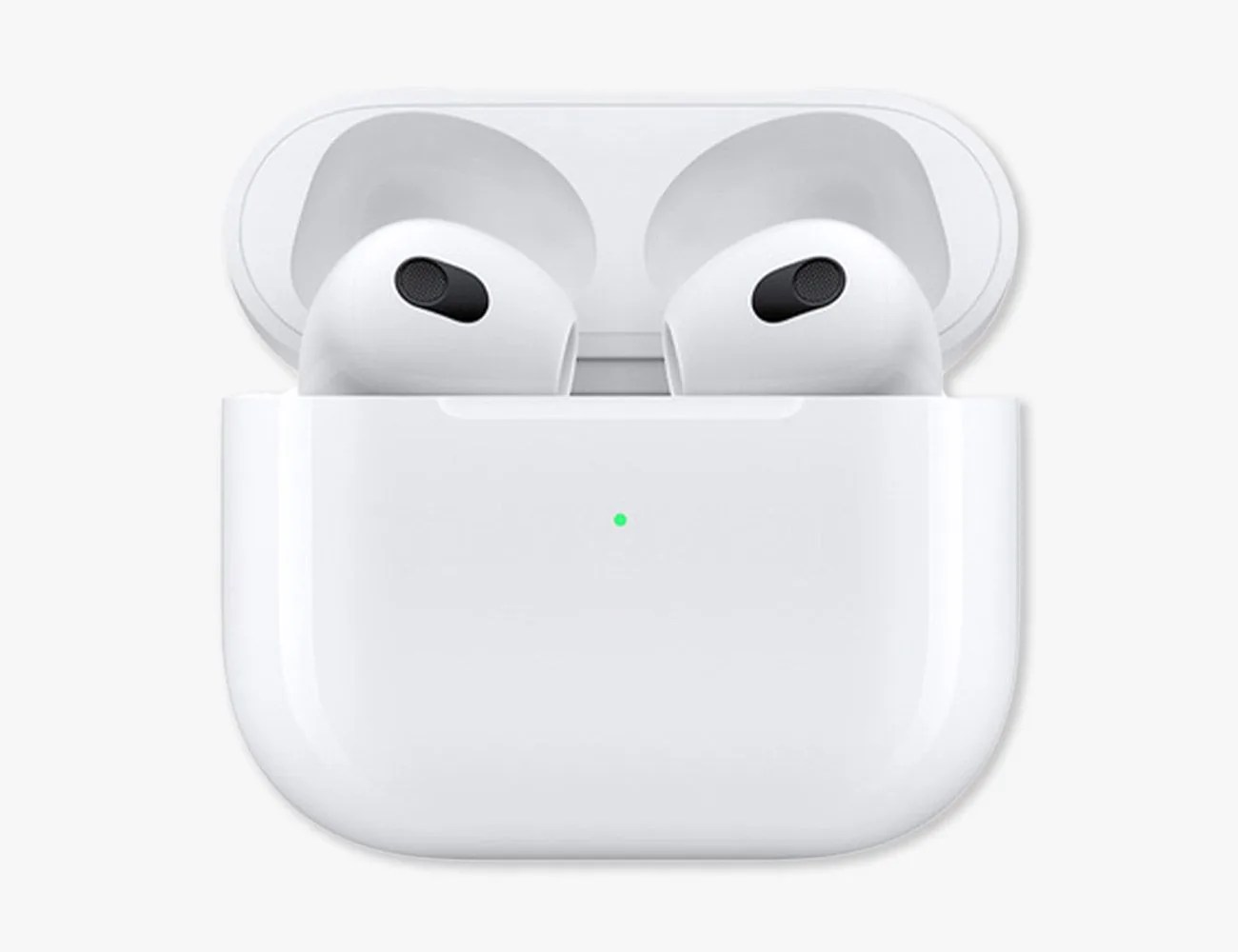 Apple
AppleAirPods (3rd Generation)
The AirPods 3 sound (and fit) almost as good as the Pros.
The AirPods 3 look and fit more similar to the AirPods Pro. They are more bulbous than the classic AirPods, and have the shorter stems of the Pro models. That said, they actually have an open design — meaning they don’t fit as deep in your ear canals, and they lack the silicone eartips of the Pros that creates a closed seal. Apple created custom drivers specifically for the AirPods 3 that helps them sound almost as good as the AirPods Pro. The sound is expansive and clear, although the bass still leaves a little to be desired. (That said, very few earbuds deliver excellent bass).
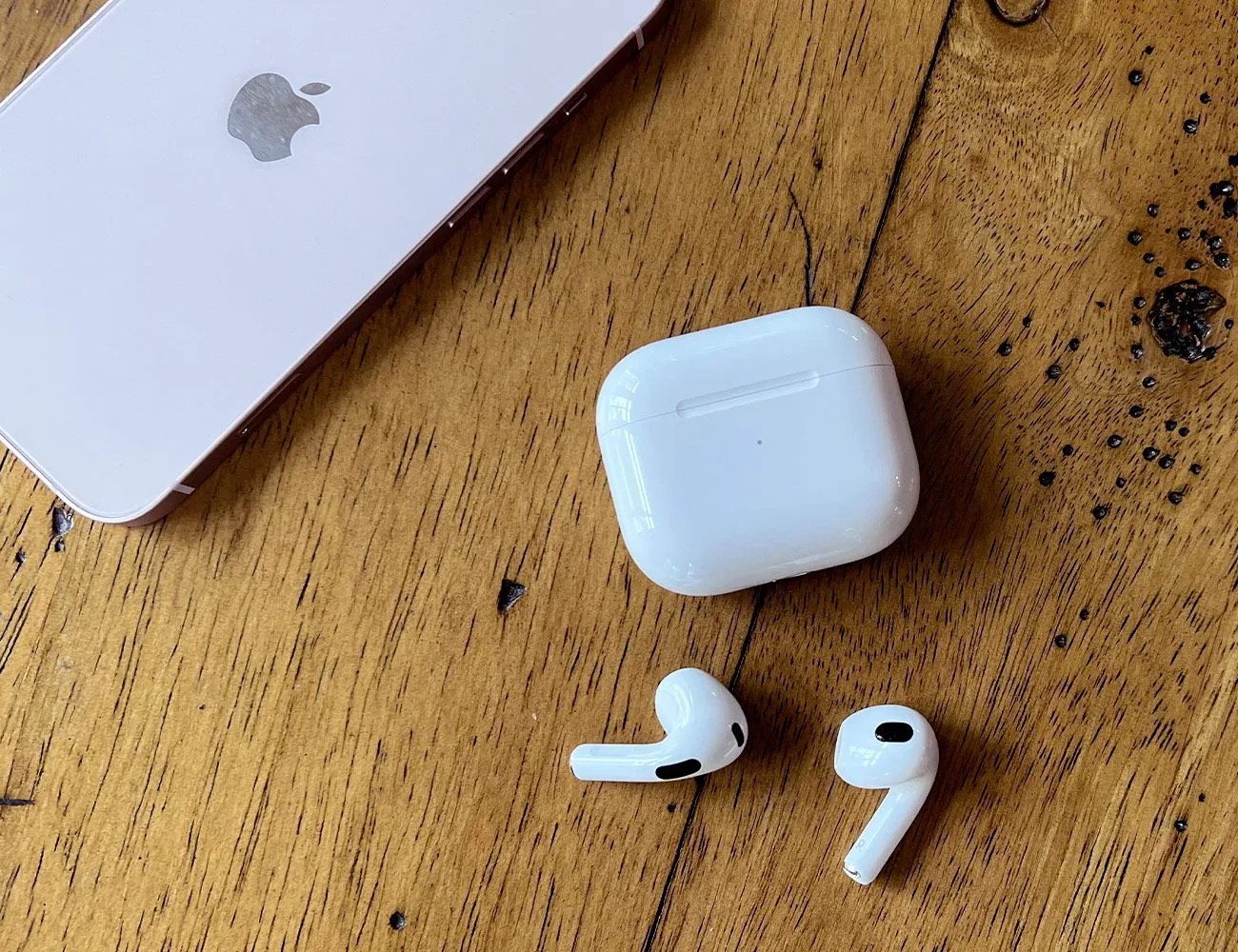
Spatial audio is still cool.
The AirPods 3 are the third wireless headphones from Apple (after the AirPods Pro and AirPods Max) that support spatial audio, the company’s immersive sound technology, with Dolby Atmos. It uses the headphones’ built-in accelerometers and gyroscopes to track your head movements, then create a virtual space where the audio adjusts as you move your head in relation to your device (specifically, your iPhone, iPad, Mac or Apple TV). It’s a really neat feature (which you can turn off if you don’t like) that makes you feel like you’re at a concert if you’re streaming music, or makes you feel like you’re in a room with the other people on your FaceTime call.
If you’ve used the AirPods Pro or AirPod Max, you likely know what spatial audio sounds like — it’s so cool — and the AirPods 3 do a great job with it. I love listening to YouTube videos on my Mac, turning my head and still being able to hear which direction the audio is coming from. It also works with a number of streaming apps that support spatial audio (such as Netflix, Disney+ and HBO Max to name a few). The only real downside is for music streaming services; if you want spatial audio, it’s Apple Music or bust right now (sorry Spotify listeners).
The new earbuds have the best battery life of any AirPods.
The main advantage the AirPods 3 have over both the AirPods and AirPods Pro: they’re the longest-lasting AirPods you can buy. Each earbud delivers roughly six hours of battery life, compared to the 4.5 hours of the AirPods Pro (with noise-canceling turned off) and five hours of the classic AirPods. Plus, the charging case carries a total of 30 hours, which is more than the 24 hours of both the AirPods Pro and AirPods 2.
TL;DR: if you’re somebody who prioritizes battery life, the AirPods 3 are the earbuds for you.
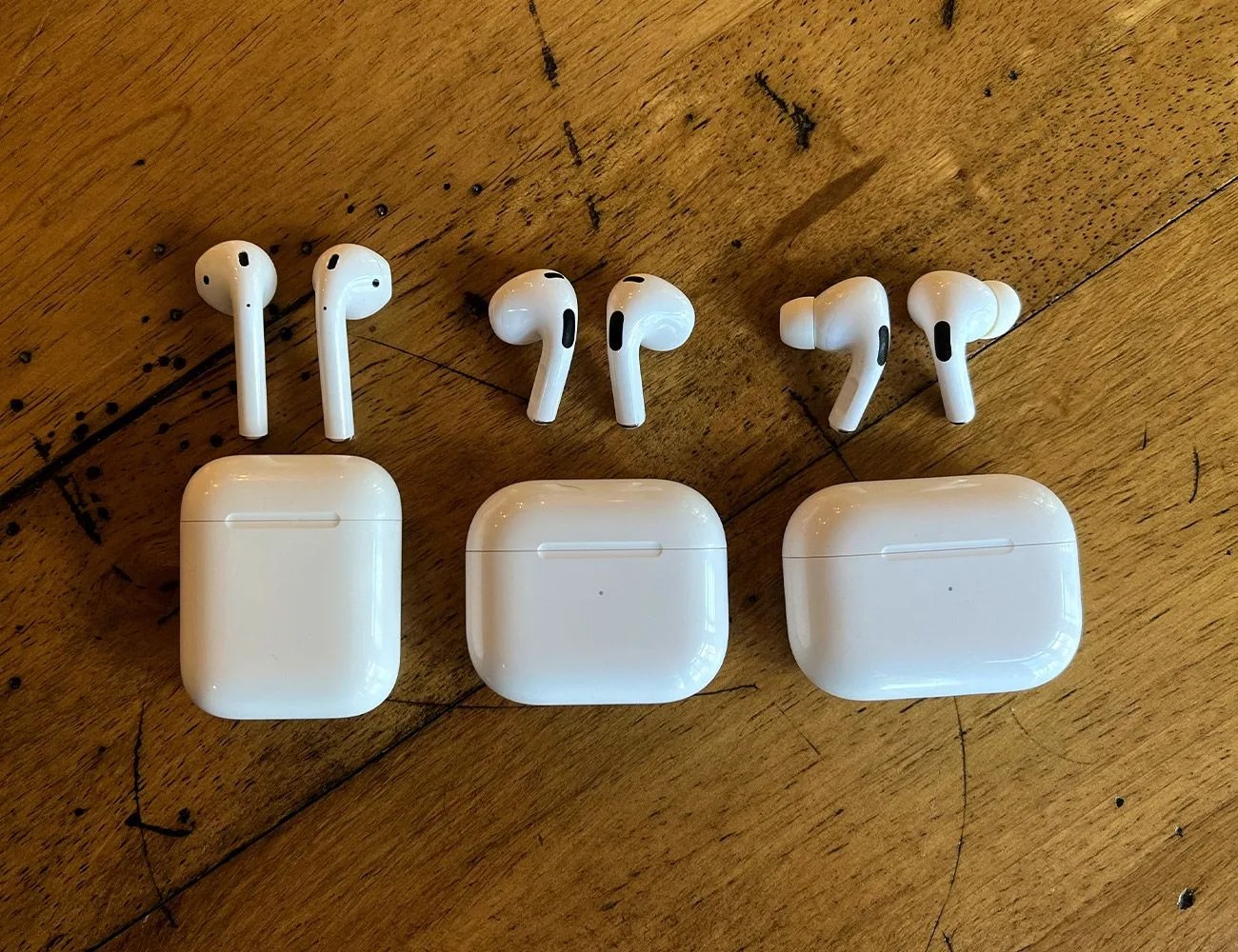
Don’t confuse MagSafe charging with fast-charging.
The AirPods 3 and AirPods Pro both support MagSafe charging. What that means: if you have a MagSafe charger, the wireless charging case of the AirPods 3 (or AirPods Pro) will magnetically snap into place and start charging. It’s convenient because it eliminates the main problem with most wireless chargers — finding that hard-to-find sweet spot — but it doesn’t bring any fast-charging benefits. Whereas iPhone 12 and 13 models will charge faster over MagSafe than other Qi-wireless chargers, the charging case of the AirPods 3 (and AirPods Pro) will only accept a max of 5 watts, no matter the wireless charger. So MagSafe charging is nice for the AirPods 3, but it’s no game changer.
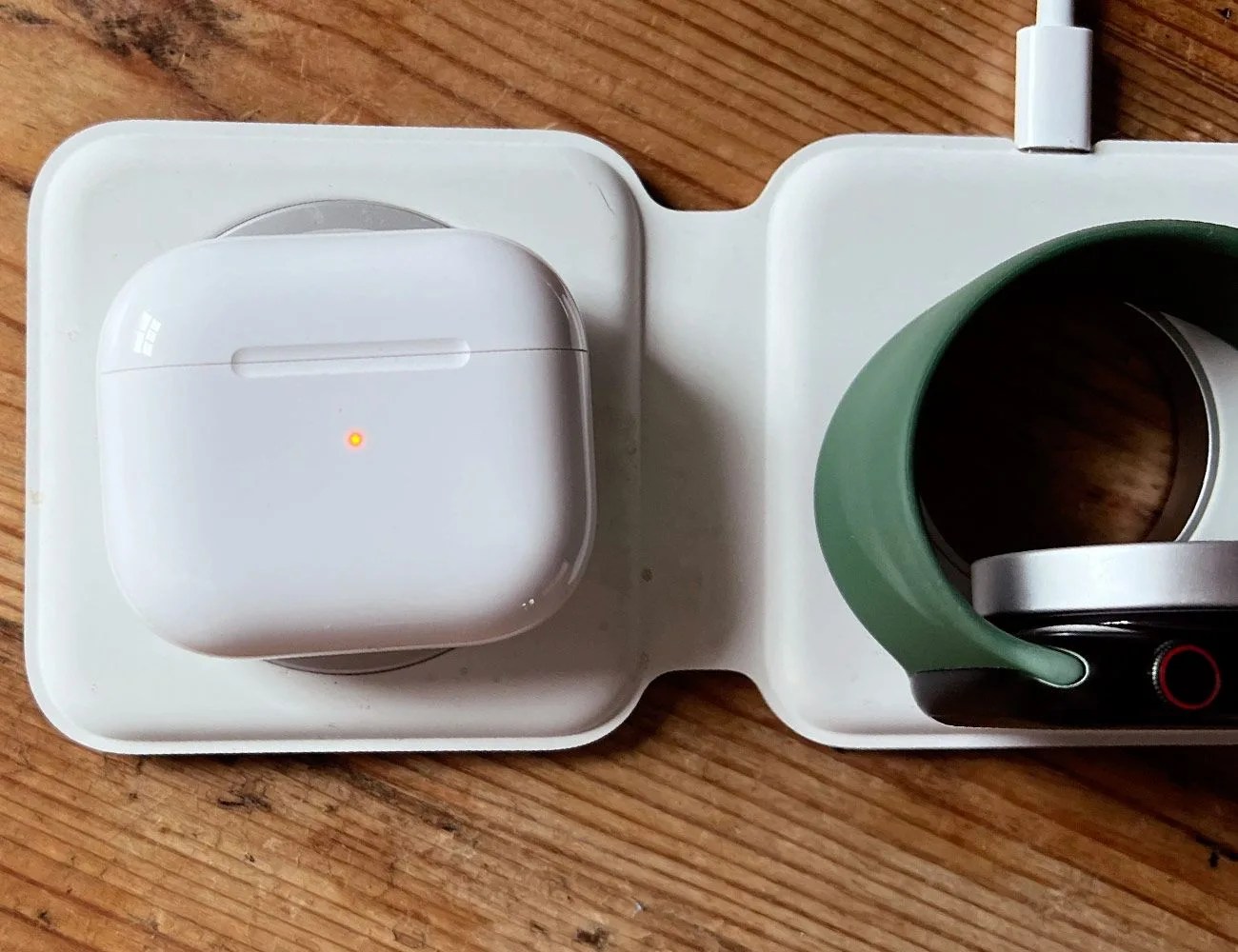
The AirPods 3’s all-new skin-detect sensor is the future.
The AirPods 3 are Apple’s first wireless earbuds — and the first wireless earbuds in general — to have what Apple is calling a “skin-detect” sensor, which replaces the optical sensor that’s in the AirPods Pro and regular AirPods. According to Apple, this new skin-detect sensor can more accurately detect when the earbuds are in your ears, as opposed to just lying on a table or being in your pockets.
You can expect future generations of AirPods to replace the optical sensor with this skin-detect sensor. However, in my experience, it doesn’t feel like a game changer — yet. The AirPods 3 do an excellent job of connecting and disconnecting when you place and remove them from your ears, but the optical sensors in previous AirPods have done this pretty well, too. So it doesn’t change the overall experience…again, just yet
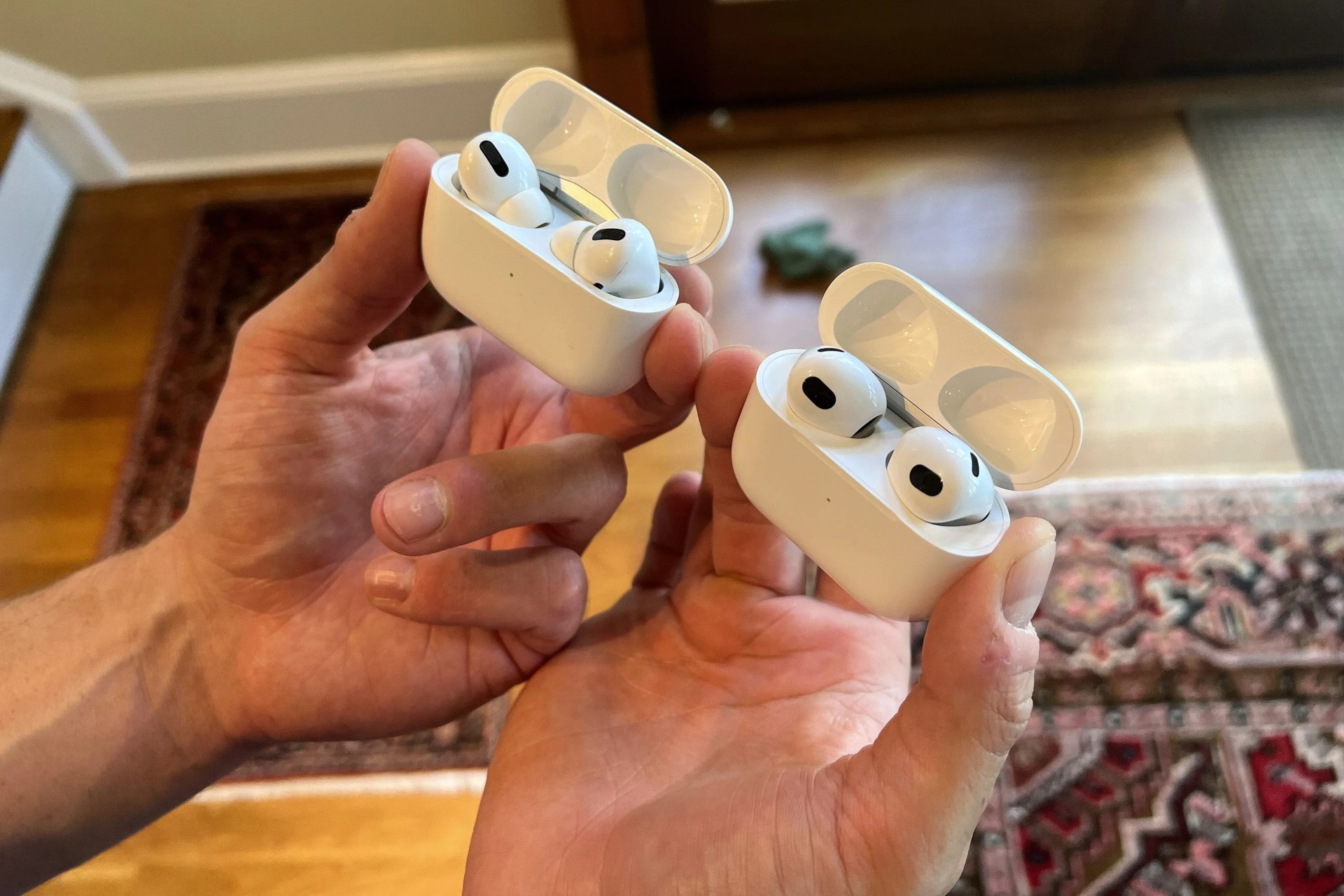
Yes, you can wear the AirPods 3 while running.
The AirPods Pro are still some of my favorite wireless earbuds to run with; they fit snug in my ears, get loud (which I need to get me pumped up) and you’re not going to kill them with sweat — something I’ve done to more than my fair share of AirPods and EarPods over the last several years, because neither is water-resistant. Thankfully, the AirPods 3 have the same IPX4 water-resistant rating as the AirPods Pro.
I logged in almost 12 miles in three runs with the AirPods 3 and, again, they felt great the whole time — I had no issues with them falling out (or feeling like they were going to fall out).
Expect the price to go down soon — very soon.
When Apple announced the AirPods 3, it also lowered the price of its entry-level AirPods from $159 to $129, which created a pretty even (and fair) spread between the AirPods ($129), AirPods 3 ($179) and AirPods Pro ($249) — if you’re buying from Apple’s website. Of course, for nearly the past year, Amazon (and other third-party sellers) have frequently sold the AirPods Pro for between $190 and $200, which isn’t that much more than the AirPods 3.
If you only have to spend a little extra dough, the AirPods Pro are still the best AirPods you can buy, especially in terms of the best sound quality and active noise-cancellation; I’d still recommend going for them over these new ones if you can get a good deal. That said, you can expect the AirPods 3 to go down in price soon, especially given that the holidays are right around the corner.
In fact…Amazon is discounting the AirPods 3 by a few bucks already.
 Apple
Apple